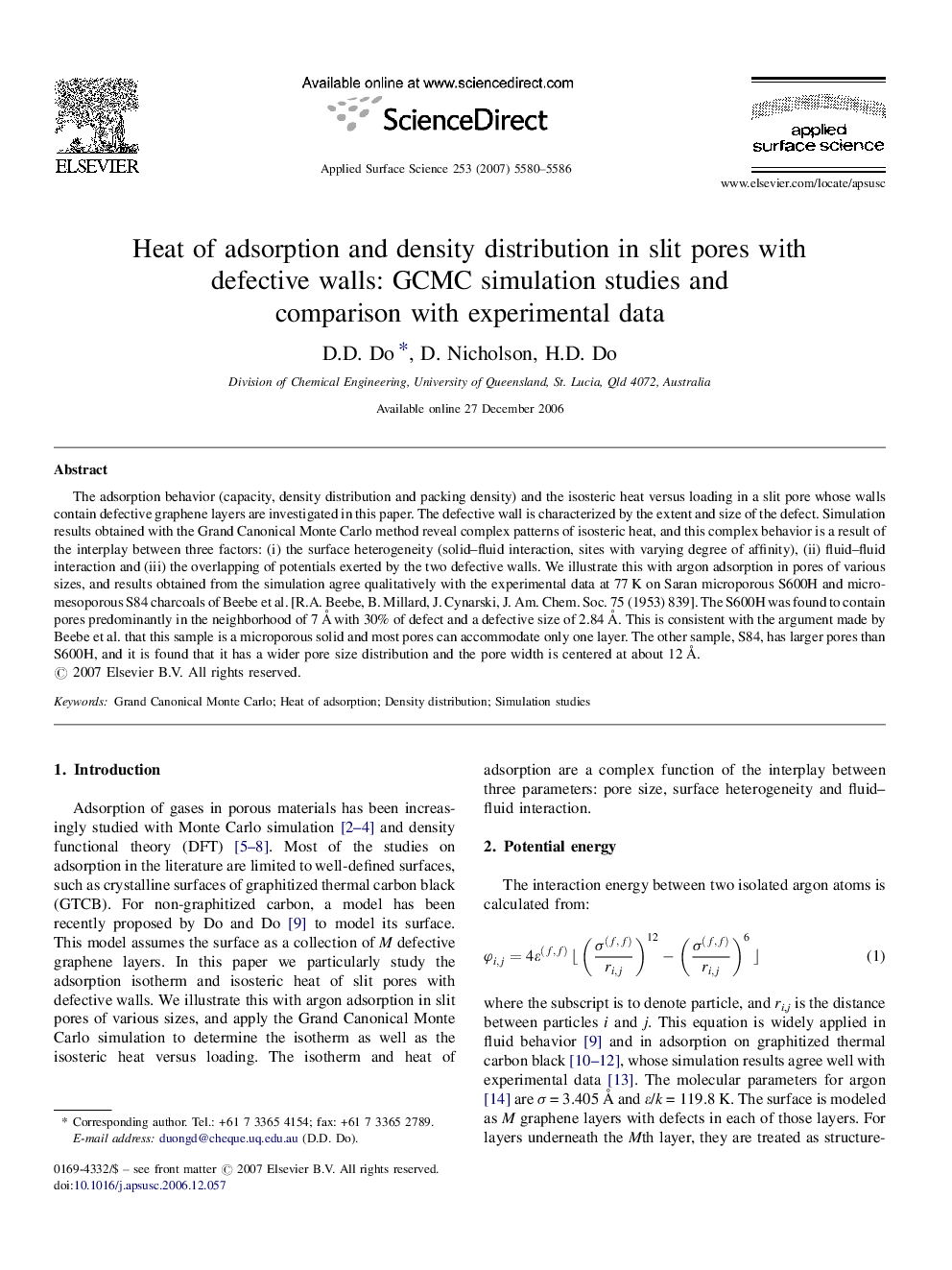| Article ID | Journal | Published Year | Pages | File Type |
|---|---|---|---|---|
| 5369705 | Applied Surface Science | 2007 | 7 Pages |
The adsorption behavior (capacity, density distribution and packing density) and the isosteric heat versus loading in a slit pore whose walls contain defective graphene layers are investigated in this paper. The defective wall is characterized by the extent and size of the defect. Simulation results obtained with the Grand Canonical Monte Carlo method reveal complex patterns of isosteric heat, and this complex behavior is a result of the interplay between three factors: (i) the surface heterogeneity (solid-fluid interaction, sites with varying degree of affinity), (ii) fluid-fluid interaction and (iii) the overlapping of potentials exerted by the two defective walls. We illustrate this with argon adsorption in pores of various sizes, and results obtained from the simulation agree qualitatively with the experimental data at 77Â K on Saran microporous S600H and micro-mesoporous S84 charcoals of Beebe et al. [R.A. Beebe, B. Millard, J. Cynarski, J. Am. Chem. Soc. 75 (1953) 839]. The S600H was found to contain pores predominantly in the neighborhood of 7Â Ã with 30% of defect and a defective size of 2.84Â Ã . This is consistent with the argument made by Beebe et al. that this sample is a microporous solid and most pores can accommodate only one layer. The other sample, S84, has larger pores than S600H, and it is found that it has a wider pore size distribution and the pore width is centered at about 12Â Ã .
